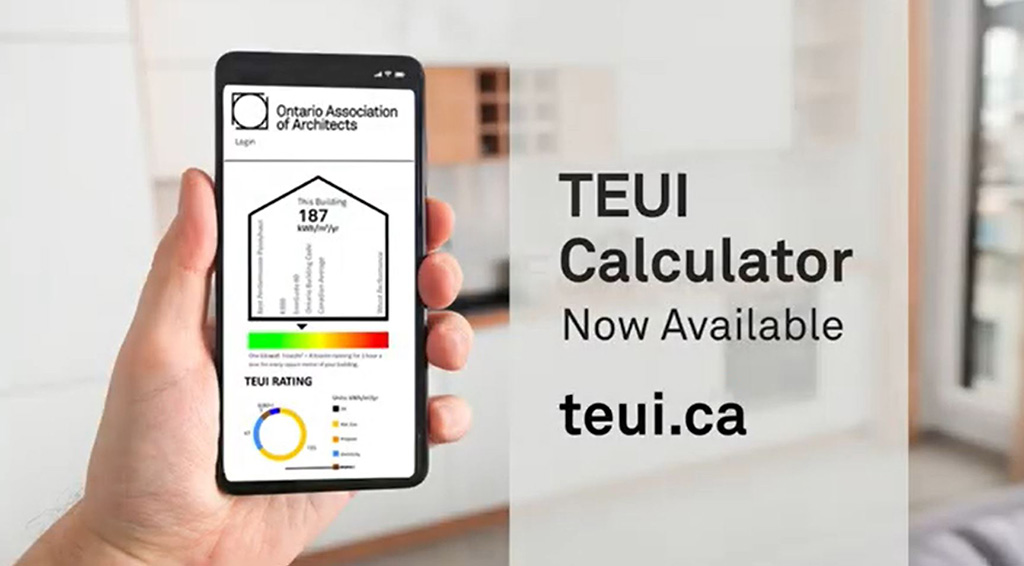The Ontario Association of Architects (OAA) has launched a new building energy usage calculator designed for use by both Ontario architects and the general public.
The new Total Energy Usage Intensity (TEUI) 2.0 calculator supplements the original TEUI 1.0 and is intended for larger Part 3 buildings as opposed to the smaller Part 9 buildings that were targeted by the first calculator.
TEUI 2.0 has the capacity to include embodied carbon, building statistics and air quality conditions and the ability to evaluate a proposed building against code compliance requirements.
The calculators were developed as the OAA fulfills its five-year strategic plan, which is focused on climate action.
“Part of our commitment to the climate challenge is to try to empower members as well as members of the public to engage with this very serious climate crisis that we have right now,” explained OAA president Settimo Vilardi. “So part of the commitment was to look at developing these tools.”
The TEUI 1.0 calculator took inputs of energy and divided that by area to derive a Total Energy Use Intensity metric. It also enabled the calculation of operational emissions carbon intensity.
But members asked for more features. The TEUI 2.0 calculator is an effort to integrate the feedback.
Vilardi said the intention was to keep the interface and outputs relatively simple but given that the second calculator deals with larger buildings, there is more data.
“You need to have a little bit more expertise to be able to generate that information. And it’s kind of an integrated process because you can change data to see how the information changes in order for you to design the building, so that one does require a different level of knowledge,” he said.
If the outcome indicates an inefficient building, it will encourage action, Vilardi suggested.
“The idea would be, how bad is it?” he said. “Because if we didn’t have this data before, we’ve got it now. And from that point on, it would encourage you either to go through the process of retrofitting it or basically hire an expert in the area, an architect or an engineer that could assist you in upgrading.”
A video offering a walk-through of the calculator will be available in the fall.
Other elements of the five-year plan in addition to the development of calculators and other resources included the launch of a new Climate Action Case Studies Series on its website.
The OAA has made two hours of climate action courses mandatory for all members to retain their licences.
The OAA also put its money where its mouth is, Vilardi said, undertaking a retrofit of its Toronto head offices to achieve net-zero.
“We decided that every architect in Ontario needed to have at least two hours of structured learning in energy efficiency and climate stability,” he said.
“It’s another level of the commitment that we brought to the building (retrofit), which are huge items to bring to the table and act as a leader in this space.”
The electricity bill for the headquarters was about $100 last year, Vilardi said.
Ultimately there will be a third iteration of the calculator, TEUI 3.0, which will be a code compliance and submission tool, comparing the building as designed against the new tiered energy step codes NECB2020 and NBC 2020 and their eventual provincial equivalents.
“We’re a regulator and so it’s important for us to make sure that architects are capable and knowledgeable and are addressing the demands of the climate crisis,” said Vilardi. “That’s our primary goal. Obviously, we’re trying to create safe, resilient communities in Ontario and I think this goes a long way towards that.”
Follow the author on Twitter @DonWall_DCN



Recent Comments
comments for this post are closed